THE BIOGRAPHY OF THE UNIVERSE - The Origin of Life (Part 4)
In an attempt to understand how life appeared on our planet, at its earliest years, we are led to study what scientists call, "abiogenesis". This study implies that life came from inanimate matter to having the characteristics of survival and reproduction. The ascension from matter to biological life through organic compounds did not happen instantaneously, rather it was a more subtle progress of trial and error. It was a step by step progressive event that led to much intricate life forms still, somehow, trying to follow those two distinct rule.
People who want to solve this puzzle of life from inanimate matter are usually found in subjects like; chemistry, biology, and paleontology. Chemistry and biology are obvious subjects relating to this topic. However, their counterpart, paleontology isn't that obvious although it deals with the attempt to understand the relationship between found fossils and to further understand their evolutionary history leading to their origin. This covers how they mutually influence the natural habitat or location of the organism that produces these fossils.
The study is a distinct combination of biology and geology. At the end of the day, it may only take the collective contribution of all these subjects to understand how life may have come about on this planet from ordinary chemical reactions. We know that there had to be some combination of matter that brought about this thing we call life.
The thing is...
The situations and circumstances that led to the rise of life in the early stages of the earth's development are very different from our present circumstances. The properties that led to biological life is a molecular interaction between carbon and water molecules and is hugely dependent on four special related chemicals known as; lipids, carbohydrates, amino acids and nucleic acids. To understand this fact of our origin, one must attempt to make intelligible, how these different chemical families co-operated.
LIPIDS
Not "liquids" mind you. These are a group of organic compounds that include: fats, oil, wax, steroids, and triglycerides.
They are usually characterized by being insoluble in water and they account for most of the fat in the human body.
However, when it comes to non-polar organic solvents, they become soluble and mix respectively. - Wikitionary
CARBOHYDRATES
This is a naturally occurring biomolecule made up of atoms of carbon, hydrogen, and oxygen.
It is for living things - energy in form of food; sugar, starch or cellulose which are very important to plants and animals.
AMINO ACIDS
Being also made out of carbon, hydrogen, oxygen and a little of nitrogen; amino acids appear naturally in a group of 20 different types.
Performing tasks that boil down to preparing a complete combination for the formation of proteins through peptide bonds.
NUCLEIC ACIDS
We know nucleic acids as little biomolecules that are present and compulsory to every form of life we know. These acids play an important role in the DNA of an organism. They are made of nucleotides that simply are monomers combined in ways forming polymers like DNA or RNA.
These nucleotides are made out of three ingredients, a phosphate group, five-carbon sugar and nitrogen base. They become RNA assuming sugar is completely composed as a RIBO [Carbonated with the formula C5H10O5]. The resulting polymer is an RNA but if sugar is derived from the RIBO itself in form of deoxyribose, then the polymer can be said to be a DNA. The nucleic acid is a very important component of life. It is said to be the most valuable biomolecules that exist because it produces, engraves and stores data in the nucleus of the cell, which is the unit of life. In the many attempts to define the origin of life in the universe, many scientists focus on how these molecules that replicate themselves came into existence. Currently, it is accepted that all known biological matter on earth came from the RNA.
In 1952, two scientists decided to prove that non-life can be transformed into life, under certain circumstances or conditions. They had a theory and tested it with an experiment, which became successful. The theory entails that proteins and amino acids can be produced by those conditions that were present at the time of the early earth. These include energy sources like lightning and radiation.
Scientists have found different biomolecules in space and they believe that these biomolecules might have somehow gotten to the earth, providing a kick-off for life. They suspect the molecules could have reached the earth by means of space dust, meteor rocks, asteroids and other smaller debris in our solar system.
In any case
Earth is the only place we have found life so far. Throughout the research to find out how, fossils have shown up and provided different evidence, pointing out that we have lost ninety-nine percent of all species that originated from the Earth. This means every living thing here, now, accounts for just one percent because others have all gone extinct. The oldest fossils of life found on earth date back to about 3.5 billion years ago, just after the earth was formed about 4.5 billion years ago. After the Hadean era, during which the surface of the earth consisted of molten, was the Eoarchean era that lasted 6 million years. This era is suspected to have consisted of the first life form which may have emerged just as the surface of the earth became solidified due to the reduction in the temperature of the earth.
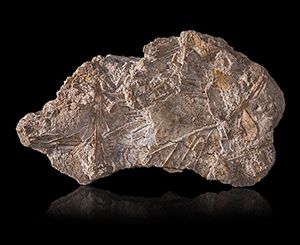
Geyserite by Didier Descouens with Creative Commons Attribution-Share Alike 4.0 International license.
Last year, sometime in May 2017, some scientists found the oldest known fossils in Western Australia. These fossils consisted of various biominerals including Geyserites which were dated to be at least 3.48 billion years old. Because of this discovery, we thought that might have been the oldest fossils of life but recently we found other fossils that evidence shows that biological life existed as far back as about 4.28 billion years ago. Fossils were discovered in Quebec, Canada. This discovery shows that life started relatively immediately after the formation of oceans - which leads to the reason why people call water the molecule of life.
"If life arose relatively quickly on earth, then it could be common in the universe - Dr, Stephen Blair Hedges".
So how exactly was early earth? 🌍
The earth had an atmosphere made out of gases that evaporated from rocks due to extreme heat. Some of these rocks were introduced to the earth as other relatively tinprotoplanetsts or planetesimals fell on the earth. Our present discovery shows that the earth was rich in water vapour, Nitrogen and carbon dioxide. Other elements (carbon monoxide, hydrogen & sulphur) were present but in relatively small quantities. Events leading to the development of the earth made it lose a lot of its matter content. Making the earth have a reduction in its gravitational energy, therefore making it hold tiny molecules of hydrogen in its ambience. This loss of mass caused the earth to also lose many other present elements causing the depletion of its first atmosphere. The oceans were acidic due to the presence of carbon dioxide in them. Allowing it to possess a pH level of 5.5. Everywhere on this earth, at this time, was filled with different chemical reactions. Water is suspected to have been around on the earth since as early as 150 years after its formation, that is after the blow with Theia. It is suggested that the earth was entirely filled with water containing only a few continental crusts with an atmosphere filled with ultraviolet light from the sun and cosmic radiation from space.
The first known life to have appeared on the earth is suspected to be the bacteria. The organisms that existed then formed a colony of archaea and eukaryotic cells (for more understanding of cells read my previous article on them). No one is exactly sure how this life arose but we are sure that cells gave rise to every living thing that we know of.
PANSPERMIA
Panspermia proposes that bodies such as comets transported life forms such as bacteria complete with their DNA through space to the Earth. - Wikipedia
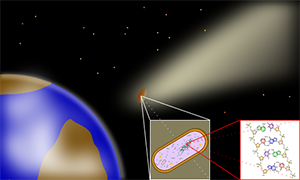
Panspermie by Silver Spoon Sokpop with Creative Commons Attribution-Share Alike 3.0 Unported, 2.5 Generic, 2.0 Generic, and 1.0 Generic license.
Panspermia is another theory that attempts to answer how life came to the earth. But it doesn't explain exactly how life came into existence. The theory inserts that microscopic life - those ones capable of surviving extreme conditions of interstellar space - must have found their way to the earth. These organisms would have been stuck in the debris of solar bodies in our solar system or even further away from our galaxy.
Panspermia proposes that microscopic organisms must have been Injected into space from some distant planet by means of protoplanetary collisions much like the ones that happened during accretion. If this is the case then when the organisms finally come in contact, in a crash, with the oceans or some other favourable locations, they can try to survive and become active colonising its new surroundings or converting it to a natural habitat.
As mentioned earlier, the study of Penspermia is not an attempt to describe how life itself started but it is a means to show how life may have been distributed throughout the universe.
EXTREMOPHILE
Thermophiles, a type of extremophile, produce some of the bright colors of Grand Prismatic Spring, Yellowstone National Park - Wikipedia
These are organisms that can survive physically or geochemically in extremely hostile conditions. Presently, there are verifiable bacteria reproductive particles that have been established to be over 40 million years old on the earth which are very resistive to radiation. Some bacteria have been seen to be living out their lives buried miles under the cold and darkest parts of ice in Antarctica.
You could say they have been literally "chilling out".
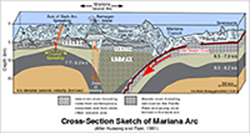
Cross section of mariana trench by Hussong, Fryer (1981) with Creative Commons Attribution-Share Alike 3.0 Unported license.
Anyway, we have also found some bacteria in the Mariana Trench which is known to be the deepest place in the oceans. Microbes have also been found to be living happily thousands of miles under the sea floor, inside rocks of the deepest oceans in the earth. Is it just me or do they seem to be hiding out from the rest of us? Not like we are the harmful ones.
"You can find microbes everywhere. They are extremely adaptable to conditions and survive where ever they are" - Wikipedia
REFERENCES
12345
678910
11121314
15161718
1920

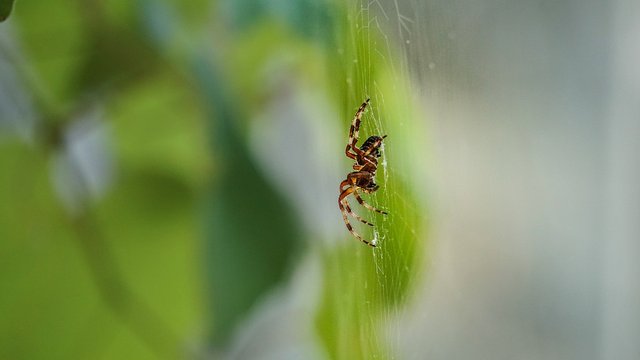


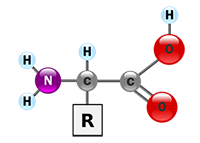
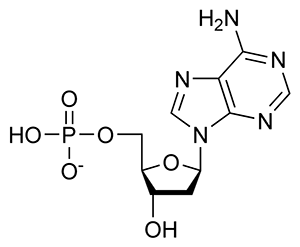

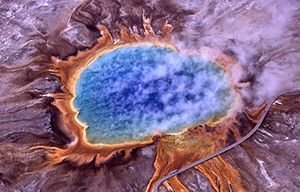
Interesting and entertaining, GREAT WORK!! Keep it up bud
Many thanks
Good post. So educative. Wonderful
Many thanks
You received a 60.0% upvote since you are a member of geopolis and wrote in the category of "geology".
To read more about us and what we do, click here.
https://steemit.com/geopolis/@geopolis/geopolis-the-community-for-global-sciences-update-4
You may want to consider balancing your dozens of wikipedia references with something a little more reliable from, say, google scholar. Wikipedia is ok, but should be careful not to overuse it
Alright.
I will ensure to do that so in subsequent posts.
The feedback is much appreciated
This information is quite thrilling. I just learnt about different phase of earth formation, and research about discovery of fossil showing the age of earth. Thanks @agbona
Glad you learnt something new